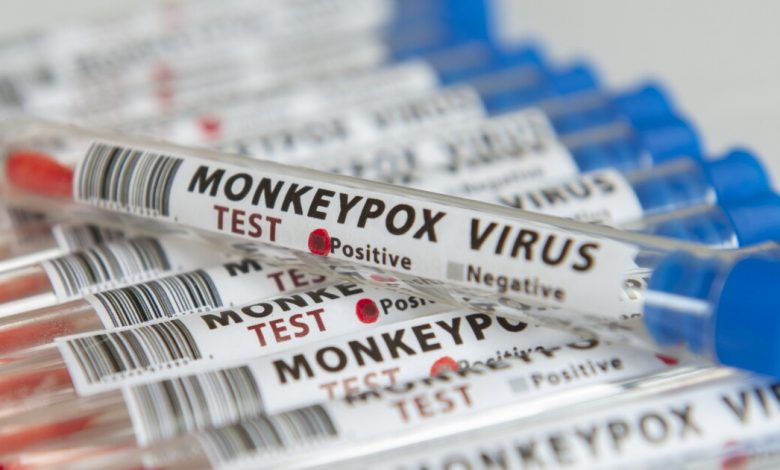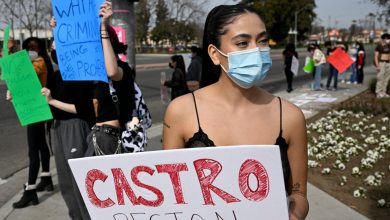How Colleges Can Prepare For — and Prevent — Monkeypox Outbreaks

Even with many campuses emptied out for the summer, colleges are seeing their first cases of the latest disease sweeping across the world: monkeypox. Georgetown University, the University of Texas at Austin, and West Chester University are among the campuses urging their communities not to panic.
“This infectious disease is not like COVID-19 or the flu, meaning it does not spread as quickly,” read West Chester University’s statement to the community.
“The risk to the greater campus community remains low,” said a spokesperson at the University of Texas.
And Georgetown reminded its community that monkeypox is a “rare disease.”
But monkeypox is becoming decidedly less rare. As of Tuesday, the Centers for Disease Control and Prevention reported that nearly 3,500 people in the United States have tested positive for monkeypox, just two months after the first case was confirmed. The disease is picking up steam in countries that have historically not reported it, with over 18,000 cases worldwide. It’s neither a new virus nor a particularly infectious one — it’s closely related to smallpox, which the U.S. eradicated in 1972. But now monkeypox is making a comeback, prompting the World Health Organization to declare it a global health emergency.
Now colleges must contemplate the potential for outbreaks on campus when students return in the fall. The tight-knit social and sexual networks on college campuses could exacerbate the virus, experts told The Chronicle, and the best way to prevent outbreaks is through direct and frequent communication and speaking to the most vulnerable communities where they are.
Unlike COVID-19, monkeypox is spread mainly through close, rather than casual, contact and can only be spread after symptoms begin, early research shows. For that reason, many epidemiologists did not predict the outbreaks would grow to such large proportions and spread to so many countries (75 according to the CDC). The pox usually presents as a rash that can look like “pimples or blisters,” the CDC said. They can appear on the face, inside the mouth, in the genital region, or on other parts of the body.
According to Wafaa M. El-Sadr, the founder and director of ICAP, a Columbia University global public-health initiative working to expand access to health care, there are three things working in the country and colleges’ favor when it comes to this outbreak.
“First thing is the monkeypox virus is an old virus… Number two, we have a vaccine — two vaccines, actually,” El-Sadr said. “And thirdly, we do have a treatment.”
The two vaccines initially were developed for smallpox and are both in low supply in the U.S. One is a newer vaccine, administered as most people are accustomed — a shot in the arm. The other is the original smallpox vaccine, which creates a small scar on the arm when the pronged injection device is used to insert the vaccine. Mass use of that vaccine was eliminated after 1972, so primarily only Americans over 50 years old have the tell-tale scar. The older vaccine is also unsafe for the immunocompromised, patients with some skin conditions, and pregnant people, but it’s in the greatest supply.
The U.S. supply of the newer vaccine is extremely limited, El-Sadr said, and is kept in small supply in case of a bio-terror attack.
Most universities do not yet have access to the vaccine, although some are stocking up on tests. The requirements for the vaccine in most cities are already very limiting, although they will likely become more widely available as demand climbs.
There are two main strains of monkeypox, El-Sadr said, and the one moving through the U.S. is the less lethal one. No one has died from monkeypox in the U.S. so far, but the symptoms are far from pleasant. El-Sadr said that this summer’s outbreak includes more cases with lesions in the genital area that are associated with severe pain.
And college campuses could become a new monkeypox battleground as students return in the fall. The tight social networks on a college campus could aid the spread. Monkeypox can also spread via “fomites” — things which can carry infection — like clothes, bedding, furniture, or towels, early research indicates. This could quickly become an issue in dorms or shared-living spaces.
The American College Health Association does not have guidance available that specifically deals with monkeypox and when asked, a spokesperson referred to CDC guidance for congregate settings.
El-Sadr, who is involved in drafting Columbia’s strategy against monkeypox, said the most important measure to prevent monkeypox outbreaks is the communication strategy. El-Sadr said she knows from studying HIV/AIDS messaging that what might work for clinicians or communications professionals often isn’t the best approach to reaching the most affected audiences.
The vast majority of confirmed cases in the U.S., according to the CDC, are among gay and bisexual men and transgender women. That reality has created challenges for public-health departments and universities as they toe the line between directing resources to the most vulnerable populations and stigmatizing them as “disease carriers.” Half the battle, El-Sadr said, is correcting misinformation that’s already floating around: that monkeypox is a “gay disease,” that it’s sexually transmitted, or that it will stay isolated to certain communities.
According to El-Sadr, the fact that monkeypox seems to be most prevalent among men who have sex with men is merely a matter of chance — that the disease got a foothold in a specific community and spread within existing social and sexual networks.
“Then transmission continues within those networks,” El-Sadr said. “But, again, that doesn’t mean it’s going to stay there.”
Universities should look to “cultural brokers” to spread monkeypox-prevention information and make sure the most vulnerable communities stay informed.
Already, misinformation around monkeypox has spread through social media and higher education. A computer science professor at the University of Texas at Dallas tweeted from a since-deleted account that society should “find a cure for homosexuality,” saying that anal sex “can lead to a variety of diseases,” linking an article on monkeypox, The Dallas Morning News reported. The university has since issued a statement saying it would look into complaints against the professor and would allow students to take alternate sections of his classes in the fall taught by at least one other instructor. The university did not respond to a request for further comment.
LGBTQ+ advocates lay the blame for such misinformation at the feet of public-health authorities. Christopher R. Vasquez, director of communications for the National Center for Lesbian Rights, said that the slow speed at which the government responded to outbreaks is “shameful.” Public-health organizations must walk a thin line “to hammer the threat this outbreak poses for those most at risk while also ensuring that those communities do not suffer the false blame,” Vasquez said.
El-Sadr recommended speaking directly with student identity groups while drafting health messaging to make sure it speaks to the intended audience.
“Is the message clear? Is it ambiguous? Is it stigmatizing? Is it effective? Is it not effective? I do think that we have to work very hard to engage the recipients to help us shape the messages,” El-Sadr said.
The content of those messages, too, is a matter for debate among public-health and university officials. In the New York City Health Department, epidemiologists argue whether encouraging gay men to temporarily limit the number of sexual partners they have will help contain the disease or create more stigma, which could quickly backfire, The New York Times reported.
The depth to which health communications should discuss sexual activity is also up for discussion. The CDC offered guidance on how to have safer sex, like advising people to have virtual sex or masturbating together at a distance or avoiding kissing. Some colleges have shared this advice, which has garnered mixed reactions from students on social media. RESPND-MI, or the Rapid Epidemiologic Study of Prevalence, Network, and Demographics of Monkeypox Infection, is a New York-based LGBTQ+ survey of monkeypox symptoms and networks that has also put together tips for safer sex.
The NCLR released a joint statement with several other LGBTQ+-rights groups calling on the CDC to expand monkeypox testing and vaccines, less than a week before the WHO declared the disease a global emergency on Saturday. Joey Espinoza-Hernández is the director of policy and community building at the Los Angeles LGBT Center, which also signed on to the statement. Espinoza-Hernández, who uses they/them pronouns, said universities should look to “cultural brokers” to spread monkeypox-prevention information and make sure the most vulnerable communities stay informed.
“Maybe that looks like student organizations. Maybe that looks like depending on residential assistance,” Espinoza-Hernández said.
They said partnering with local community health centers that specialize in treating the LGBTQ+ community can also provide students with an alternative source of judgment-free health care to stop the disease in its tracks. Espinoza-Hernández pointed to the fact that many of the requirements for the vaccine, which remains in extremely limited supply, are based on sexual activity, which makes the gay community a “scapegoat” and creates stigma that could stop someone from seeking care.
“It requires public education that dispels some of these myths. And it’s not that straight and cisgender people can’t be impacted by monkeypox. But at this point, we know who’s being disproportionately impacted. And so, if there isn’t a clear public-health message around that,” Espinoza-Hernández said, “then we’re going to be in a place where that lack of information is filled with assumptions and stigma.”
Source link






